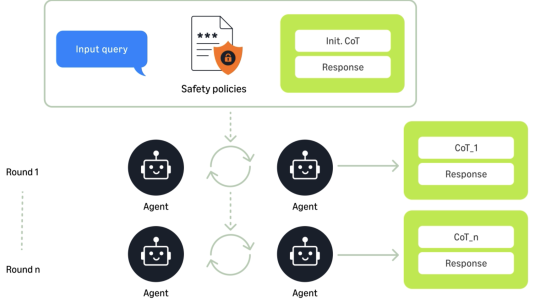Customer-obsessed science


Research areas
-
July 31, 2025Using ensembles of agents to generate and refine interactions annotated with chains of thought improves performance on a battery of benchmarks by an average of 29%.
Featured news
-
EACL 20242024Users of AI-based virtual assistants and search systems encounter challenges in articulating their intents while seeking information on unfamiliar topics, possibly due to complexity of the user’s intent or the lack of meta-information on the topic. We posit that an iterative suggested question-answering (SQA) conversation can improve the trade-off between the satisfaction of the user’s intent while keeping
-
2024Vision-Language (VL) models have gained significant research focus, enabling remarkable advances in multimodal reasoning. These architectures typically comprise a vision encoder, a Large Language Model (LLM), and a projection module that aligns visual features with the LLM’s representation space. Despite their success, a critical limitation persists: the vision encoding process remains decoupled from user
-
2024Sequence-to-sequence vision-language models are showing promise, but their applicability is limited by their inference latency due to their autoregressive way of generating predictions. We propose a parallel decoding sequence-to-sequence vision-language model, trained with a Query-CTC loss, that marginalizes over multiple inference paths in the decoder. This allows us to model the joint distribution of
-
Suggesting relevant questions to users is an important task in various applications, such as community Q&A or e-commerce websites. To ensure that there is no redundancy in the selected set of candidate questions, it is essential to filter out any near-duplicate questions. Identifying near-duplicate questions has another use case in light of the adoption of Large Language Models (LLMs) – fetching pre-computed
-
IEEE Robotics and Automation Letters 2024, IROS 20242024In this paper we propose an approach to trajectory planning based on the purpose of the task. For a redundant manipulator, many end effector poses in the task space can be achieved with multiple joint configurations. In planning the motion, we are free to choose the configuration that is optimal for the particular task requirement. Many previous motion-planning approaches have been proposed for the sole
Academia
View allWhether you're a faculty member or student, there are number of ways you can engage with Amazon.
View all





























